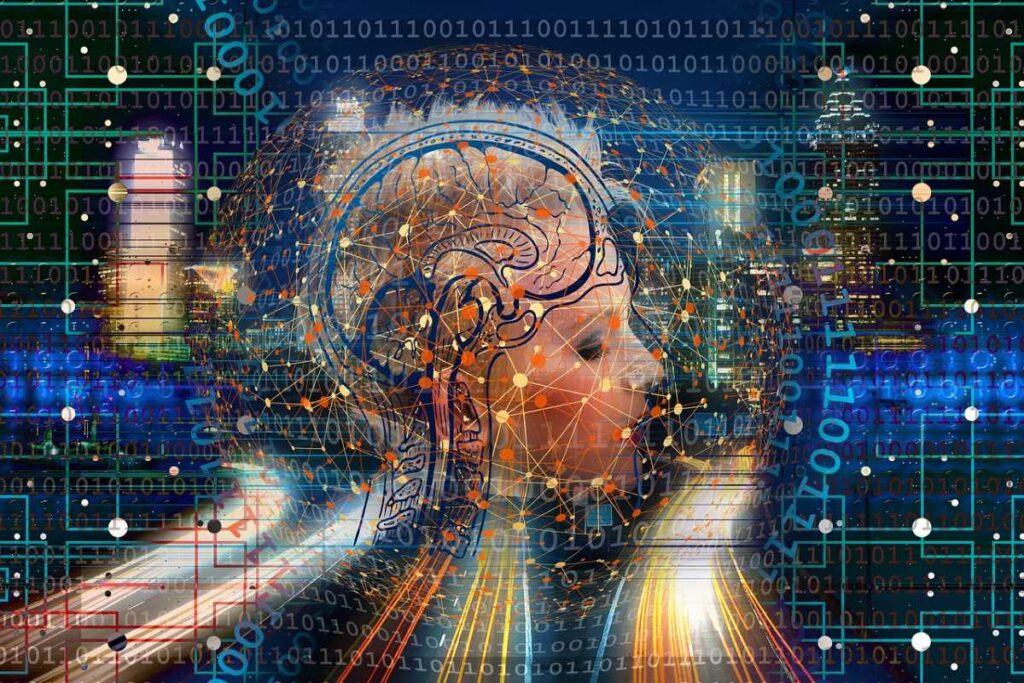Mid-21st century – The latest technology allows people at death’s door or those who have already passed away to be transferred into a virtual afterlife where they can be young and live forever. Living people can only “visit” this place, and the visits are limited to five hours a week.
Sounds scary and fascinating, doesn’t it? This is the storyline behind the episode called San Junipero of the British sci-fi dystopian TV anthology Black Mirror. The idea of mind uploading has been thrilling human minds since the 1950s.
But how plausible are these speculations? Are we close to mind uploading and digital eternity?
Mind uploading is a hypothetical technology of brain scanning and mapping, which would allow the human consciousness to be transferred to another system or a computer device. This computer device would simulate all the necessary brain processes so that the uploaded consciousness responds to external stimuli the same way it would react in the original biological form.
The human connectome and theoretical background
The computational theory of mind (CTM) is based on the idea that the human mind is a digital computer manipulating symbolic representations according to syntactic rules. As part of the interdisciplinary discourse in cognitive and neuroscience, it raises many questions about consciousness and the human brain functions.
Imagine that the human brain is also a “computational device.” It is a highly sophisticated organ that consists of heterogeneous, structurally distinct, yet closely interconnected components and comprises around 100 billion neurons. Furthermore, each neuron can connect with up to fifteen thousand other neurons.
There are thousands of connections and types of synapses. Each of them function differently. Some work faster, while others act slower. Some grow rapidly and shrink during the training process, while others remain more stable. And in addition to the trillions of clearly defined direct pairs, there are neurons releasing neurotransmitters that simultaneously affect many other neurons.
This model of a neuron connection, or more precisely, the combinations of all neurons and their interrelationships, underlies the human connectome concept – a structural mapping of the brain. Neuroinformatics initiatives like the Human Connectome Project are designed to collect and analyze such connections and prepare the data for more advanced research.

Simulation neuroscience: The Future is one step closer
In recent decades, we have witnessed a new brain research area that aims to make a breakthrough in neurophysiology, medicine, and artificial intelligence development. This includes projects that model brain activity in real-time using a supercomputer; the main objective is to create a full-fledged, autonomous, and active virtual copy of the human brain that can simulate mental processes.
The Blue Brain Project
The goal of this Swiss brain research initiative is to build biologically detailed digital reconstructions and simulations of a rodent brain. In 2015, the project reported a simulation of around 31,000 neurons of a mouse’s brain.
The Human Brain Project
HBP is a large-scale scientific research project that aims at creating a global collaborative infrastructure to connect industrial and scientific researchers in the fields of neuroscience, brain-related medicine, and computing.
Nectome
Nectome is a research company specializing in brain and long-term memory preservation. The startup’s main activities include connectome preservation, molecular dynamics, memory extraction, and biomolecular preservation. The company’s scientists focus on developing preservation techniques of storing the physical traces of human memory.
Final thoughts
Although today’s computers are not yet trying to revolt against humanity, one cannot help but recognize that the so-called “technological singularity” – a hypothetical moment in time when technological progress will become so rapid and complex that it will be incomprehensible – is almost in sight.
The futurist, inventor, and Google’s director of engineering, Ray Kurzweil, declared that by 2045 we will have a technological singularity. Kurzweil’s predictions rely on the exponential growth of information technology. It means the more progress humanity makes, the faster we move towards bigger discoveries.
Kurzweil’s prophecies include whole brain emulation. And while the inventor is very positive about the results of this scenario, are we ready for such a dramatic transformation? Some studies show that people with purity values are prone to condemn the concept of mind uploading.
Other scientists believe that the uploaded consciousness may not be recognizably human or turn out to be a very limited version. This inevitably leads us to the ship of Theseus paradox – if all parts of the object have been replaced, does the object remain the same?
Eysenck, M. W., & Keane, M. T. (2010): Cognitive psychology: A student’s handbook (6th ed.). Psychology Press
Wilson, R.A., Keil, F.C. (2001): The MIT Encyclopedia of the Cognitive Sciences. MIT Press














